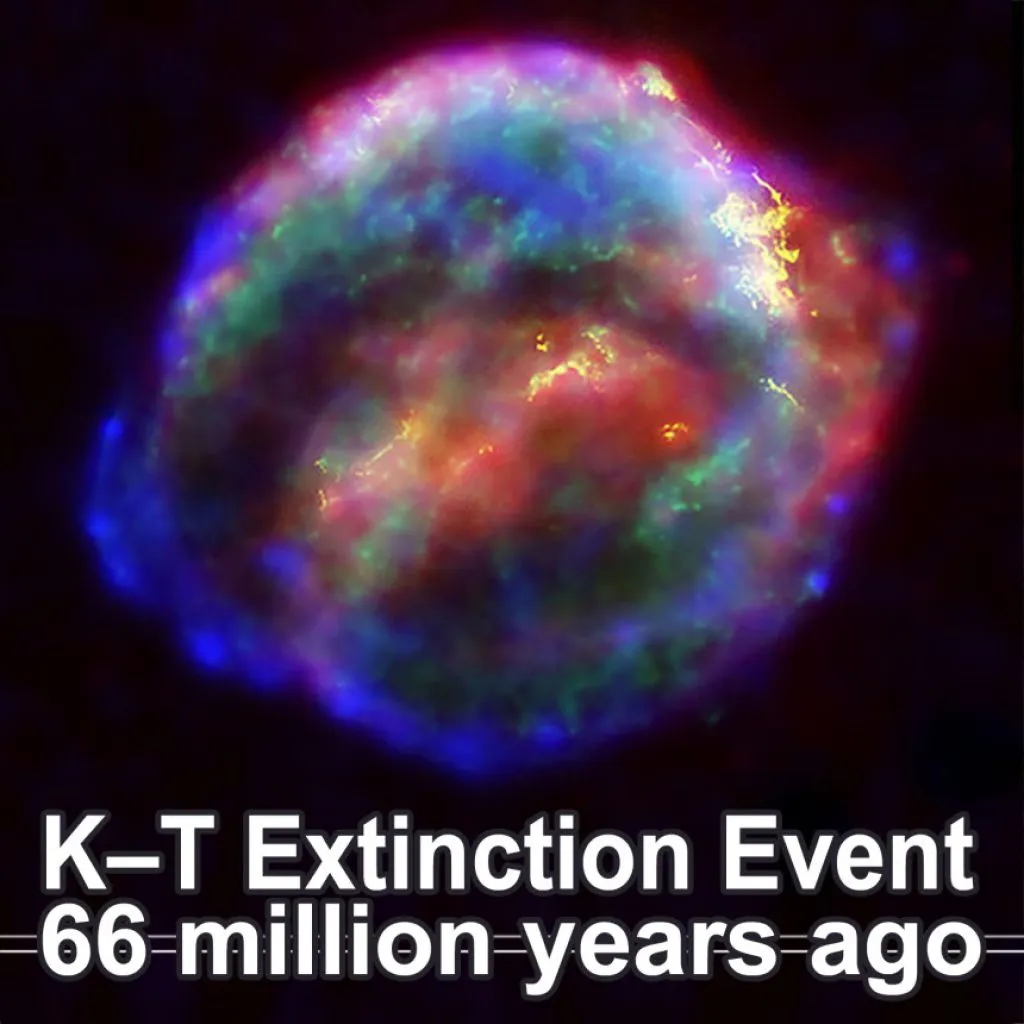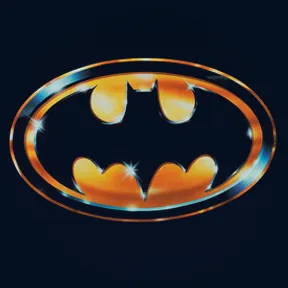
K–T Extinction Event
The Cretaceous–Paleogene (K–Pg) extinction event, also known as the Cretaceous–Tertiary (K–T) extinction, was a sudden mass extinction of some three-quarters of the plant and animal species on Earth, approximately 66 million years ago.
With the exception of some ectothermic species such as the leatherback sea turtle and crocodiles, no tetrapods weighing more than 25 kilograms (55 lb) survived. It marked the end of the Cretaceous period and with it, the entire Mesozoic Era, opening the Cenozoic Era that continues today.
In the geologic record, the K–Pg event is marked by a thin layer of sediment called the K–Pg boundary, which can be found throughout the world in marine and terrestrial rocks. The boundary clay shows high levels of the metal iridium, which is rare in the Earth's crust, but abundant in asteroids.
As originally proposed in 1980 by a team of scientists led by Luis Alvarez and his son Walter Alvarez, it is now generally thought that the K–Pg extinction was caused by the impact of a massive comet or asteroid 10 to 15 km (6.2 to 9.3 mi) wide, 66 million years ago, which devastated the global environment, mainly through a lingering impact winter which halted photosynthesis in plants and plankton. The impact hypothesis, also known as the Alvarez hypothesis, was bolstered by the discovery of the 180-kilometre-wide (112 mi) Chicxulub crater in the Gulf of Mexico in the early 1990s, which provided conclusive evidence that the K–Pg boundary clay represented debris from an asteroid impact. The fact that the extinctions occurred simultaneously provides strong evidence that they were caused by the asteroid.
A 2016 drilling project into the Chicxulub peak ring confirmed that the peak ring comprised granite ejected within minutes from deep in the earth, but contained hardly any gypsum, the usual sulfate-containing sea floor rock in the region: the gypsum would have vaporized and dispersed as an aerosol into the atmosphere, causing longer term effects on the climate and food chain.
Other causal or contributing factors to the extinction may have been the Deccan Traps and other volcanic eruptions, climate change, and sea level change.
A wide range of species perished in the K–Pg extinction, the best-known being the non-avian dinosaurs. It also destroyed a plethora of other terrestrial organisms, including certain mammals, pterosaurs, birds, lizards, insects and plants. In the oceans, the K–Pg extinction killed off plesiosaurs and the giant marine lizards (Mosasauridae) and devastated fish, sharks, mollusks (especially ammonites, which became extinct), and many species of plankton. It is estimated that 75% or more of all species on Earth vanished. Yet the extinction also provided evolutionary opportunities: in its wake, many groups underwent remarkable adaptive radiation—sudden and prolific divergence into new forms and species within the disrupted and emptied ecological niches. Mammals in particular diversified in the Paleogene, evolving new forms such as horses, whales, bats, and primates. Birds, fish, and perhaps lizards also radiated.















































